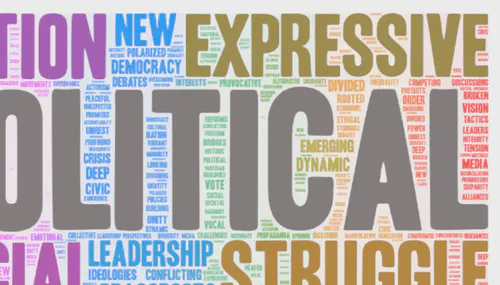In the realm of leadership, it’s not uncommon to hear about poor decisions, scandals, or gaffes involving top leaders. However, an intriguing notion suggests that “perhaps the mistakes don’t solely originate from the leader themselves, but from those surrounding them.” Let’s delve deeper into this perspective and explore how historical and contemporary case studies substantiate it.
The Impact of Those Surrounding Leaders
Leaders don’t operate in a vacuum; they rely on advisors, staff, and management teams to aid in decision-making. If these individuals provide misguided counsel or harbor ulterior motives, they can influence leaders to make detrimental or even illegal decisions. The Watergate scandal, for instance, saw numerous poor decisions made by Nixon’s staff, which impacted the President’s choices.
Policy Implementation
Even if a leader has a sound vision, if its implementation is entrusted to incompetent or corrupt individuals, the outcome can be vastly different from what was intended. The Enron scandal and Cambridge Analytica debacle demonstrate how a toxic corporate culture and financial manipulation by mid- and upper-level management led to the downfall of these companies.
Misinformation
Leaders often make decisions based on the information presented to them. If this information is incorrect or manipulated by those surrounding them, the resulting decisions can be misguided. The Volkswagen emissions scandal, for example, illustrates how incorrect information or decisions made by engineers and managers at various levels influenced the entire company.
Organizational Culture
A toxic work environment or organizational culture, which may be created or reinforced by those surrounding leaders, can lead to operational or ethical mistakes. The 2008 Financial Crisis is a prime example of how a corporate culture encouraging high-risk behavior and poor decision-making from various levels within organizations led to catastrophic consequences.
Contemporary Case Studies
Watergate Scandal (1972-1974): This political scandal rocked President Richard Nixon’s administration. Although Nixon was the leader, many controversial and illegal decisions were made by his staff, including John Ehrlichman and H.R. Haldeman, who attempted to cover up the scandal.
Enron Scandal (2001): The collapse of energy company Enron is a classic example of how senior executives and those surrounding CEO Jeffrey Skilling and Chairman Kenneth Lay created a corporate culture that encouraged financial manipulation and unethical business practices.
Volkswagen Emissions Scandal (2015): Volkswagen’s involvement in the emissions scandal, where the company used software to cheat emissions tests, highlights how engineers and managers at various levels made decisions that influenced the entire company.
Cambridge Analytica Scandal (2018): The data of millions of Facebook users was used without permission to influence elections in several countries. Although Mark Zuckerberg faced significant pressure, investigations revealed that many decisions related to data privacy and usage were made by mid-level managers and staff.
2008 Financial Crisis: Many decisions leading to this crisis were made by traders, analysts, and executives at banks and financial institutions, often driven by personal financial incentives and a corporate culture promoting high-risk behavior.
The Barings Bank Scandal: : A Cautionary Tale of Unchecked Ambition. In 1995, Nicholas Leeson, a young and ambitious trader at Barings Bank’s Singapore office, embarked on a reckless trading spree that would ultimately lead to the bank’s downfall. Leeson’s unchecked ambition and lack of oversight allowed him to conceal massive losses from his superiors and management, culminating in a catastrophic collapse that shook the financial world. Leeson’s ability to hide his losses was facilitated by his dual role as trader and controller, giving him unprecedented control over the bank’s transactions. However, the true extent of the damage was only revealed when the losses became too massive to conceal. The aftermath of the scandal saw Barings Bank sold to Dutch bank ING for a symbolic £1, and Leeson sentenced to six and a half years in prison.
General Motors Ignition Switch Crisis (2014): General Motors faced a significant crisis when it was discovered that they had sold millions of cars with defective ignition switches, linked to 124 deaths and numerous injuries. Although CEO Mary Barra claimed she was unaware of the issue before becoming CEO, internal reports and external investigations revealed that many engineers and managers at GM had known about the problem for years but chose not to take action or report it adequately.
The Theranos Scandal: In 2015, Theranos, a healthcare technology company, was exposed for its fraudulent claims about its blood-testing technology. CEO Elizabeth Holmes had touted the company’s innovative approach, but it was later revealed that Theranos had been using third-party equipment that did not match its claims. Many employees, including engineers and scientists, knew about the deception but were too afraid to speak out.
The Blockbuster Fiasco: In the early 2000s, Blockbuster, a dominant player in the video rental market, failed to adapt to the rise of online streaming. Despite CEO John Antioco’s efforts to launch an online service, the company’s middle management and shareholders resisted the change, prioritizing short-term gains over long-term sustainability. As a result, Blockbuster was unable to compete with Netflix, which successfully pioneered the streaming model.
Toshiba Accounting Scandal (2015): Toshiba was involved in a massive accounting scandal, where the company manipulated its operating profits by 152 billion yen ($1.2 billion) over seven years. Many executives and managers at various levels were involved in this manipulation.
These examples demonstrate how leadership can fail or be negatively influenced by those surrounding the leader, whether through direct poor decisions, information hiding, or disregard for warnings and issues that should have been addressed. This underscores the importance of selecting competent, moral, and integrity-driven teams to ensure that leaders’ decisions are based on accurate and transparent information.
In each of these cases, while top leaders often become the focus of criticism, there is strong evidence that the mistakes and poor decisions were frequently originated from or reinforced by those surrounding them. This highlights the significance of the work environment and the influence of management teams in the success or failure of organizations.



